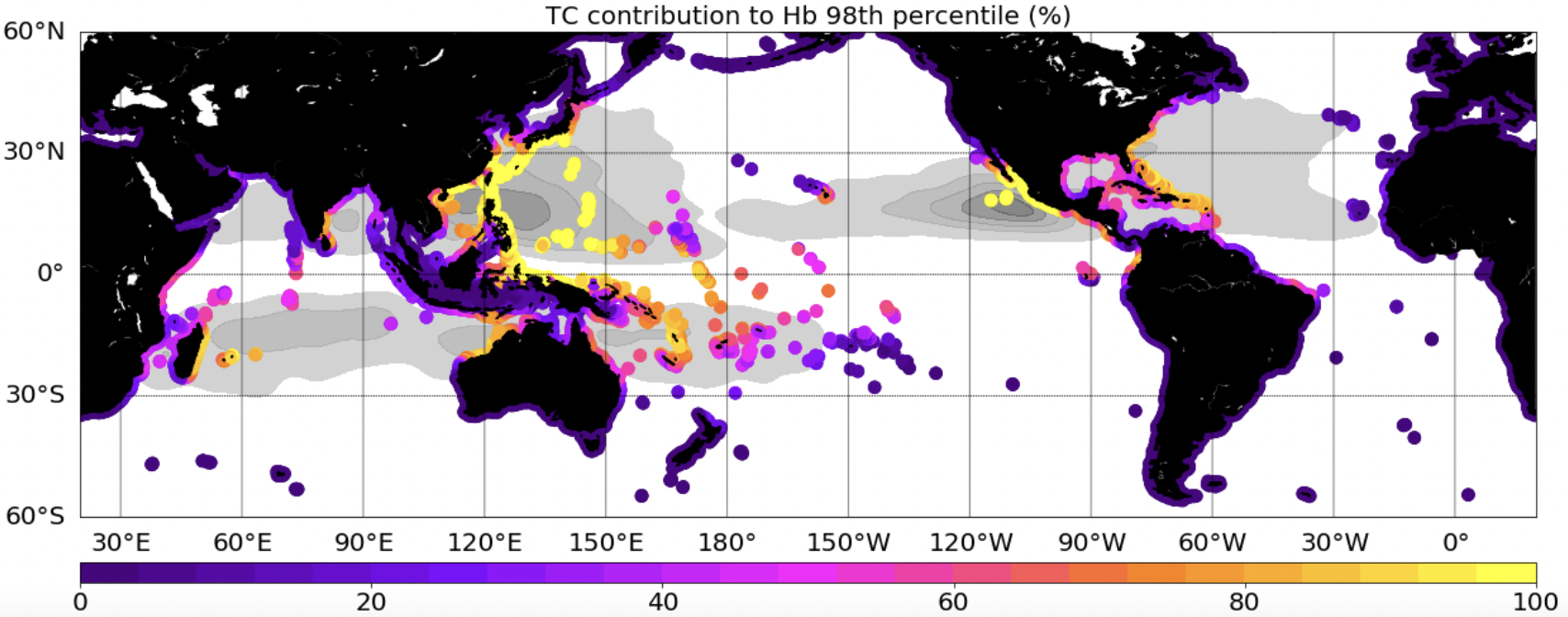Oceanographic geographical features
Type of resources
Available actions
Topics
Keywords
Contact for the resource
Provided by
Years
Formats
Representation types
Update frequencies
status
Scale
Resolution
-
Sediment Profile Images (SPIs) are commonly used to map physical, biological and chemical/nutrient gradients in benthic habitats. SpiArcBase is a software that has been developed for the analysis of Sediment Profile Images (SPIs). It has been conceived to improve the objectivity of extracted information (especially the apparent Redox Potential Discontinuity (aRPD). The software presents a graphical user interface designed to enhance the interpretation of features observed on SPIs in an objective manner and to facilitate image management and structures visualization via a data base.The software also allows for the storage of generated data and the automatic computation of a benthic habitat quality index. The facilities provided within JERICONext include access to the software through free downloading and assistance in its utilization.
-

This dataset provides extreme waves (Hs: significant wave height, Hb:breaking wave height, a proxy of the wave energy flux) simulated with the WWIII model, and extracted along global coastlines. Two simulations, including or not Tropical Cyclones (TCs) in the forcing wind field, are provided.
-

Daily air-sea heat fluxes dataset on the last 27 years (1992-2018). Global coverage with 0.25° resolution. Data is mainly coming from aggregated calibrated scatterometer datasets and numerical models. Main geophysical parameters are: sensible heat flux, latent heat flux, wind speed, SST, air temperature. Latest version : 4.1 released in June 2019.
-

SpiArcBase is a software developed for the treatment of Sediment Profile images (SPIs). Sediment Profile Images (SPIs) are widely used for benthic ecological quality assessment under various environmental stressors. The processing of the information contained in SPIs is slow and its interpretation is largely operator dependent. SpiArcBase enhances the objectivity of the information extracted from SPIs, especially for the assessment of the apparent Redox Potential Discontinuity (aRPD). This software allows the user to create and manage a database containing original SPIs and corresponding derived pieces of information. Once you have downloaded it, you can ask for help and stablish a helpdesk.
-

Surface current data measured by the CNR-ISMAR HF radar network are made available in graphical format for the last 48 hours and in real time and delayed mode via a THREDDS catalog which provides metadata and data access. The web site gives information on HF radar technology, sites position and operational parameters, and links to the THREDDS catalog. The catalog offers different remote-data-access protocols such as Open-source Project for a Network Data Access Protocol (OpenDaP), Web Coverage Service (WCS), Web Map Service (WMS) (OGS standards), as well as pure HTTP or NetCDF-Subsetter. They allow for metadata interrogation and data download (even sub-setting the dataset in terms of time and space) while embedded clients, such as GODIVA2, NetCDF-JavaToolsUI and Integrated Data Viewer, grant real-time data visualization directly via browser and allow for navigating within the plotted maps, saving images, exporting-importing on Google Earth, generating animations in selected time intervals. The data on the THREDDS catalog are organized in two folders, collecting the hourly current files of the last five days and grouping all the historical data. The two folders are accessible both in aggregated and in non-aggregated configuration. The data set consists of maps of radial and total velocity of the sea water surface current collected by the HF radars within the Italian Coastal Radar Network established in the framework of the Italian flagship project RITMARE. Surface ocean velocities estimated by HF Radar are representative of the upper 0.3-2.5 meters of the ocean. The radar sites are operated according to Quality Assessment procedures and data are processed for Quality Control. Data access tools are compliant to Open Geospatial Consortium (OGC), Climate and Forecast (CF) convention and INSPIRE directive. The use of netCDF format allows an easy implementation of all the open source services developed by UNIDATA.
-
The MetOp First Generation (FG) is a European multi-satellite program jointly established by ESA and EUMETSAT, comprising three satellites, MetOp-A, -B and -C. The primary sensor onboard MetOp-FG, the Advanced Very High Resolution Radiometer/3 (AVHRR/3) contributed by NOAA, measures Earth emissions and reflectances in 5 out of 6 available bands (centered at 0.63, 0.83, 1.61, 3.7, 11 and 12 microns), in a swath of 2,600km from an 817km altitude. These data are collected in a Full Resolution Area Coverage (FRAC) mode, with pixel size of 1.1km at nadir. MetOp-A launched on 19 October 2006 is the first in the MetOp-FG series. The NOAA Advanced Clear-Sky Processor for Ocean (ACSPO) Level 2 Preprocessed (L2P) SST product is derived at the full AVHRR FRAC resolution and reported in 10 minute granules in NetCDF4 format, compliant with the GHRSST Data Specification version 2 (GDS2). Subskin SSTs are derived using the regression Nonlinear SST (NLSST) algorithm, which employs three bands (3.7, 11 and 12 microns) at night and two bands (11 and 12 microns) during the day. The ACSPO AVHRR FRAC L2P product is monitored and validated against quality controlled in situ data, provided by the NOAA in situ SST Quality Monitor system (iQuam; Xu and Ignatov, 2014, https://doi.org/10.1175/JTECH-D-13-00121.1 ), in another NOAA system, SST Quality Monitor (SQUAM; Dash et al, 2010, https://doi.org/10.1175/2010JTECHO756.1 ). SST imagery and clear-sky masking are continuously evaluated, and checked for consistency with other sensors and platforms, in the ACSPO Regional Monitor for SST (ARMS) system. MetOp-A orbital characteristics and AVHRR/3 sensor performance are tracked in the NOAA 3S system (He et al., 2016, https://doi.org/10.3390/rs8040346 ).The L2P Near Real Time (NRT) SST files are archived at PO.DAAC with 3-6 hours latency, and then replaced by the Re-ANalysis (RAN) SST after about 2 months later with identical file names. Two features can be used to identify them: different file name time stamps and netCDF global attribute metadata source=NOAA-NCEP-GFS for NRT and source=MERRA-2 for RAN. A reduced size (0.45GB/day), equal-angle gridded (0.02-deg resolution) ACSPO L3U product is available at https://doi.org/10.5067/GHMTA-3US28
-
A Group for High Resolution Sea Surface Temperature (GHRSST) Level 4 sea surface temperature analysis produced as a retrospective dataset (four day latency) and near-real-time dataset (one day latency) at the JPL Physical Oceanography DAAC using wavelets as basis functions in an optimal interpolation approach on a global 0.01 degree grid. The version 4 Multiscale Ultrahigh Resolution (MUR) L4 analysis is based upon nighttime GHRSST L2P skin and subskin SST observations from several instruments including the NASA Advanced Microwave Scanning Radiometer-EOS (AMSR-E), the JAXA Advanced Microwave Scanning Radiometer 2 on GCOM-W1, the Moderate Resolution Imaging Spectroradiometers (MODIS) on the NASA Aqua and Terra platforms, the US Navy microwave WindSat radiometer, the Advanced Very High Resolution Radiometer (AVHRR) on several NOAA satellites, and in situ SST observations from the NOAA iQuam project. The ice concentration data are from the archives at the EUMETSAT Ocean and Sea Ice Satellite Application Facility (OSI SAF) High Latitude Processing Center and are also used for an improved SST parameterization for the high-latitudes. The dataset also contains additional variables for some granules including a SST anomaly derived from a MUR climatology and the temporal distance to the nearest IR measurement for each pixel.This dataset is funded by the NASA MEaSUREs program ( http://earthdata.nasa.gov/our-community/community-data-system-programs/measures-projects ), and created by a team led by Dr. Toshio M. Chin from JPL. It adheres to the GHRSST Data Processing Specification (GDS) version 2 format specifications. Use the file global metadata "history:" attribute to determine if a granule is near-realtime or retrospective.
-
This L3U (Level 3 Uncollated) dataset contains global daily Sea Surface Temperature (SST) on a 0.02 degree grid resolution. It is produced by the National Oceanic and Atmospheric Administration (NOAA) Advanced Clear Sky Processor for Ocean (ACSPO) using L2P (Level 2 Preprocessed) product acquired from the Meteorological Operational satellite C (Metop-C) Advanced Very High Resolution Radiometer 3 (AVHRR/3) (https://podaac.jpl.nasa.gov/dataset/AVHRRF_MC-STAR-L2P-v2.80 ) in Full Resolution Area Coverage (FRAC) mode as input. It is distributed as 10-minute granules in netCDF-4 format, compliant with the Group for High Resolution Sea Surface Temperature (GHRSST) Data Specification version 2 (GDS2). There are 144 granules per 24-hour interval. Fill values are reported in all invalid pixels, including land pixels with >5 km inland. For each valid water pixel (defined as ocean, sea, lake or river), and up to 5 km inland, the following major layers are reported: SSTs and ACSPO clear-sky mask (ACSM; provided in each grid as part of l2p_flags, which also includes day/night, land, ice, twilight, and glint flags). Only input L2P SSTs with QL=5 were gridded, so all valid SSTs are recommended for the users. Per GDS2 specifications, two additional Sensor-Specific Error Statistics layers (SSES bias and standard deviation) are reported in each pixel with valid SST. Ancillary layers include wind speed and ACSPO minus reference Canadian Meteorological Centre (CMC) Level 4 (L4) SST. The ACSPO Metop-C AVHRR FRAC L3U product is monitored and validated against iQuam in situ data (Xu and Ignatov, 2014) in the NOAA SST Quality Monitor (SQUAM) system (Dash et al, 2010). SST imagery and clear-sky mask are evaluated, and checked for consistency with L2P and other satellites/sensors SST products, in the NOAA ACSPO Regional Monitor for SST (ARMS) system. More information about the dataset is found at AVHRRF_MC-STAR-L2P-v2.80 and in (Pryamitsyn et al., 2021).
-
The Global Precipitation Measurement (GPM) satellite was launched on February 27th, 2014 with the GPM Microwave Imager (GMI) instrument on board. The GPM mission is a joint effort between NASA, the Japan Aerospace Exploration Agency (JAXA) and other international partners. In march 2005, NASA has chosen the Ball Aerospace and Technologies Corp., Boulder, Colorado to build the GMI instrument on the continued success of the Tropical Rainfall Measuring Mission (TRMM) satellite by expanding current coverage of precipitation from the tropics to the entire world. GMI is a dual-polarization, multi-channel, conical-scanning, passive microwave radiometer with frequent revisit times. One of the primary differences between GPM and other satellites with microwave radiometers is the orbit, which is inclined 65 degrees, allowing a full sampling of all local Earth times repeated approximately every 2 weeks. The GPM platform undergoes yaw maneuvers approximately every 40 days to compensate for the sun's changing position and prevent the side of the spacecraft facing the sun from overheating. Today, the GMI instrument plays an essential role in the worldwide measurement of precipitation and environmental forecasting. Sea Surface Temperature (SST) is one of its major products. The GMI data from the Remote Sensing System (REMSS) have been produced using an updated RTM, Version-8. The V8 brightness temperatures from GMI are slightly different from the V7 brightness temperatures; The SST datasets are available in near-real time (NRT) as they arrive, with a delay of about 3 to 6 hours, including the Daily, 3-Day, Weekly, and Monthly time series products.
-
A regional Group for High Resolution Sea Surface Temperature (GHRSST) Level 3 Collated (L3C) dataset for the North Atlantic Region (NAR) based on retrievals from the Visible Infrared Imaging Radiometer Suite (VIIRS). The European Organization for the Exploitation of Meteorological Satellites (EUMETSAT), Ocean and Sea Ice Satellite Application Facility (OSI SAF) is producing SST products in near real time from Metop/AVHRR and SNPP/VIIRS. Global AVHRR level 1b data are acquired at Meteo-France/Centre de Meteorologie Spatiale (CMS) through the EUMETSAT/EUMETCAST system. NAR SNPP/VIIRS level 0 data are acquired through direct readout and converted into l1b at CMS. SST is retrieved from the AVHRR and VIIRS infrared channels using a multispectral algorithm. This product is delivered as four six hourly collated files per day on a regular 2km grid. The product format is compliant with the GHRSST Data Specification (GDS) version 2.
 Catalogue PIGMA
Catalogue PIGMA